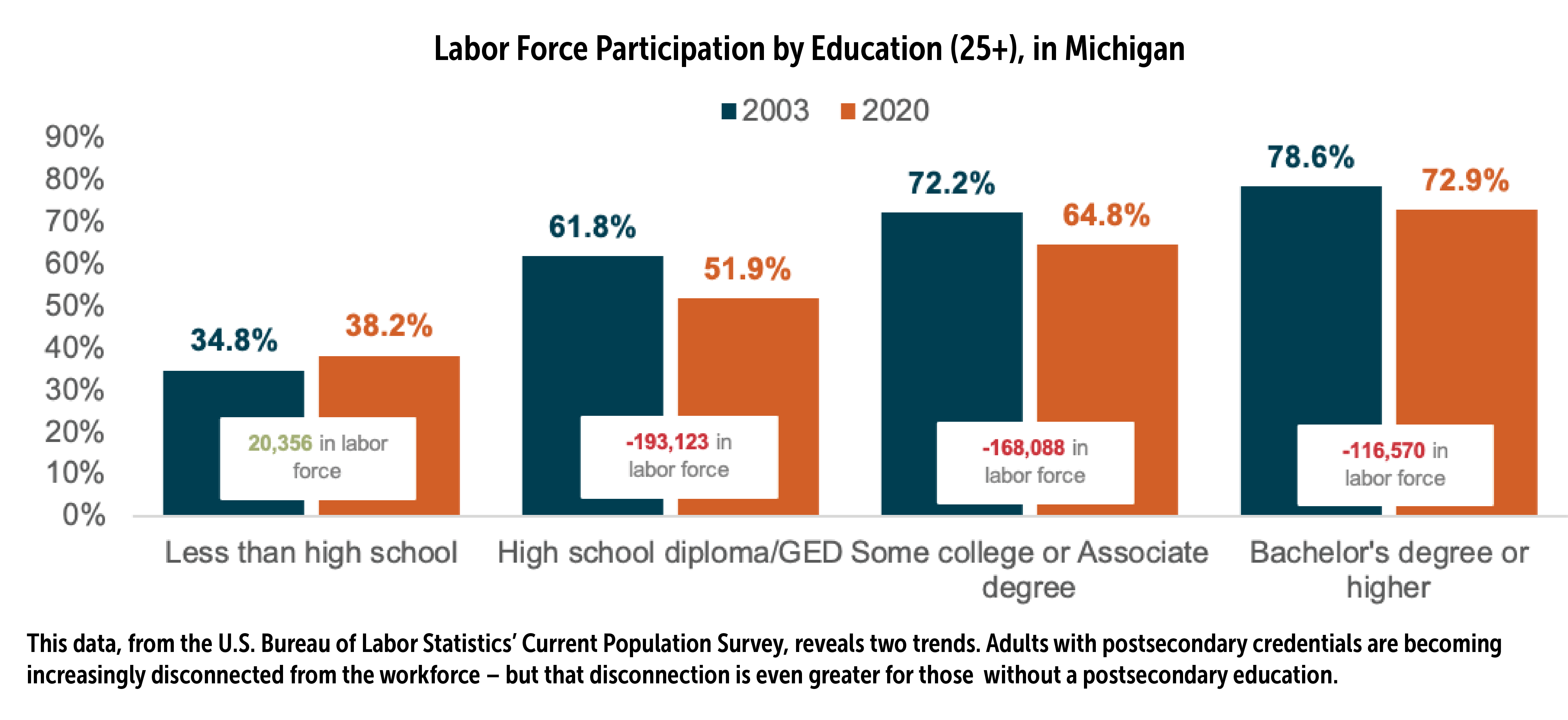A pandemic-fueled boom in high-tech automation has created opportunities as well as risks. Employers have an opportunity to manage both.
The opportunities come in the form of more-affordable, more-capable automation options that allow even smaller companies to reduce labor costs, increase revenues and boost employee productivity.
The risks arise when workers lack the education and skills that will allow them to thrive in this high-tech landscape.
This skills gap, documented in our recent report, “Michigan’s Shrinking Workforce: Examining a 20-year Problem,” is a concern for employers and employees alike. As we noted in a previous report, “The Future of Work”:
“… The world of work is changing at an ever-faster rate. Driven by artificial intelligence, automation and an increasingly global economy, this transformation is every bit as significant as the Industrial Revolution. As automation increases, however, so does employer demand for the innately human qualities – communication, teamwork, problem-solving, flexibility – that help employees thrive in the modern workplace.”
How do employers prepare their human workforce for this transformation? How can they hire for and nurture the skills needed in an increasingly automated workplace?
The topic is especially timely as evidence grows of a skills gap between what employers want and what jobseekers have to offer. This gap threatens the potential for employers to leverage the advantages of automation – even as it drives greater disruption for workers with less education.
Less Education, More Disconnection
The positive relationship between educational attainment and labor market outcomes has been well-documented. This relationship becomes even more significant as employers increasingly turn to automation. According to an August 2022 report by the U.S. Government Accountability Office:
“Department of Labor (DOL) data show that in-demand jobs require a mix of skills, including soft skills and process skills that help a person acquire knowledge quickly, such as active learning and critical thinking. Federal data also indicate that in-demand jobs having a higher number of skills deemed important also tend to require higher levels of education.”
Unfortunately, over one-third (37.2%) of Michigan’s adult population lacks a postsecondary credential, and these individuals are overrepresented among those disconnected from the labor force — accounting for nearly half (49.3%) of the 2.6 million Michigan residents over 25 who aren’t in the workforce (1,308,748).
Although participation rates are declining at an alarming rate across the board, this chart from the “Michigan’s Shrinking Workforce” report shows the disparity between those with a postsecondary degree and those without:

The good news: Multiple options are available to increase the skills of the workforce, improve employee retention and engagement, and prepare workers for a high-tech future.
We examine these strategies – including skills-based hiring, tuition assistance, career pathways, and work-based learning – in our report.
{{cta(‘658e4297-aa5d-4938-ae1d-4d2be29e1eb4′,’justifycenter’)}}


